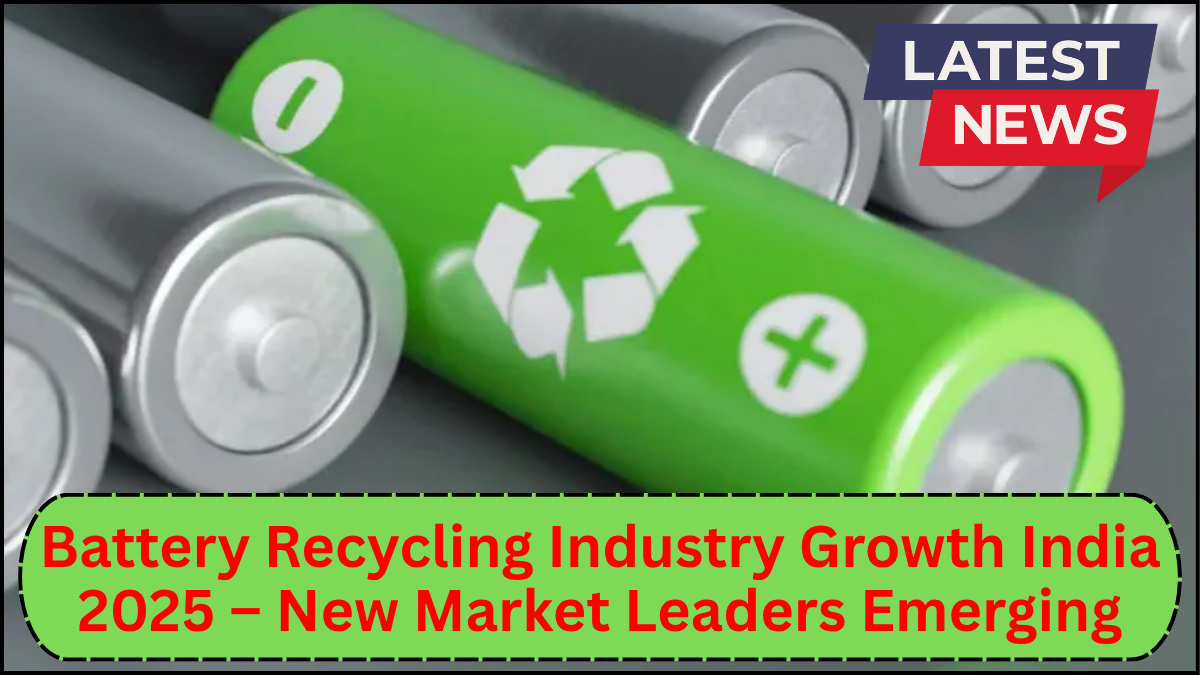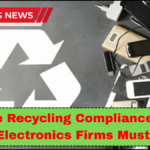India’s battery recycling industry is poised for a transformative leap in 2025. Driven by the booming electric vehicle (EV) sector, environmental mandates, and resource optimization strategies, the industry is no longer just an afterthought in the energy ecosystem. With a growing focus on EV battery recycling and lithium reuse, new players are entering the field with innovative technologies and scalable business models, reshaping the market landscape.

Why Battery Recycling is Critical for India’s Green Transition
India is undergoing a rapid shift toward electrification, especially in the transportation and renewable energy sectors. This shift is causing a surge in demand for lithium-ion batteries. However, the flip side is the massive volume of used batteries entering the waste stream. Without an efficient recycling mechanism, India could face both environmental and supply chain challenges.
Battery recycling mitigates these risks by:
-
Reducing environmental hazards from battery waste
-
Recovering valuable materials like lithium, cobalt, and nickel
-
Lowering dependence on imports for raw battery materials
-
Enhancing the sustainability of EV supply chains
The battery recycling industry growth in India in 2025 is therefore not just a commercial trend—it’s a strategic necessity.
Growth Drivers: What’s Powering the Surge?
Several converging factors are accelerating growth in this space:
1. EV Expansion
India’s electric vehicle market is expected to grow at over 40% CAGR through 2030. With this, EV battery recycling has become a crucial industry. Battery life cycles of 5-8 years mean that the first wave of EV batteries sold in the early 2020s is nearing end-of-life, creating a secondary resource stream.
2. Government Policies and Incentives
The Indian government has introduced the Battery Waste Management Rules, 2022, which mandate extended producer responsibility (EPR). Manufacturers are now accountable for the end-of-life disposal of batteries, pushing them to collaborate with recycling startups and invest in sustainable disposal channels.
3. Raw Material Scarcity and Price Volatility
Lithium and cobalt are scarce and expensive. Recycling allows recovery of up to 95% of lithium, making lithium reuse economically and strategically important. As global prices fluctuate, recycling provides a domestic buffer.
4. Foreign Direct Investment and Start-up Ecosystem
India is witnessing a spike in investment in battery recycling technologies, with global firms entering joint ventures and Indian startups developing homegrown solutions. Companies like Attero, Lohum, and Gravita India are leading innovations in lithium-ion battery recovery and closed-loop recycling models.
Emerging Market Leaders in 2025
As the market matures, several companies are standing out due to their scale, technological edge, and integrated business models:
-
Attero Recycling: With one of India’s largest e-waste facilities, Attero has scaled up its lithium battery recycling operations and exports recovered materials.
-
Lohum Cleantech: Focused on second-life battery solutions and lithium reuse, Lohum operates one of India’s largest Li-ion battery recycling plants.
-
Gravita India: Traditionally focused on lead recycling, Gravita has pivoted into lithium and EV battery recycling, expanding its global footprint.
-
Metastable Materials: A tech-first startup using green chemistry to recycle batteries efficiently, gaining traction with OEMs and battery producers.
Technological Innovations Shaping the Future
Battery recycling isn’t just about collection—it’s deeply tech-driven. Innovations in hydrometallurgical processes, direct recycling methods, and AI-driven material sorting are making recycling more efficient and cost-effective.
-
Hydrometallurgy allows extraction of metals using aqueous solutions, with minimal emissions.
-
Direct recycling preserves battery structure, enabling faster reuse with less energy consumption.
-
AI and automation are being applied to identify battery types, predict degradation, and optimize disassembly.
The Road Ahead: Challenges and Opportunities
Challenges
-
Informal recycling practices still dominate parts of the market, posing environmental and health risks.
-
High capital requirements for setting up modern recycling facilities.
-
Regulatory enforcement is inconsistent across states.
Opportunities
-
Development of localized recycling hubs in urban centers.
-
Collaborations between OEMs and recyclers for seamless reverse logistics.
-
R&D into recycling new battery chemistries like solid-state and sodium-ion.
FAQs
Q1. What is driving battery recycling industry growth in India in 2025?
The growth is driven by the EV boom, new recycling regulations, rising demand for critical minerals, and a surge in green investments.
Q2. Why is EV battery recycling important?
EV battery recycling is key to reducing environmental waste, recovering expensive materials like lithium and cobalt, and ensuring sustainable battery supply chains.
Q3. What is lithium reuse, and how does it help?
Lithium reuse refers to recovering lithium from spent batteries and reprocessing it for use in new batteries. It reduces reliance on mining and lowers battery production costs.
Q4. Which companies are leading the battery recycling space in India?
Attero, Lohum, Gravita India, and Metastable Materials are some of the leading players leveraging tech and scale to dominate the battery recycling industry in 2025.
Q5. What technologies are used in battery recycling?
Key technologies include hydrometallurgical processing, direct recycling, AI-powered battery sorting, and automation in disassembly.
click here to learn more


